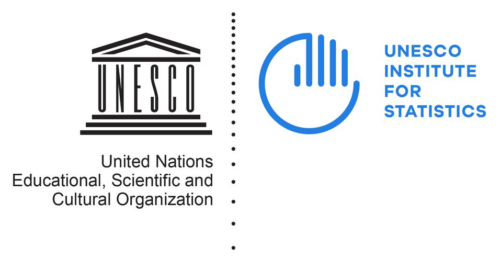The Brazilian Study Abroad Market
In this market report on Brazil we will cover socio-economic, educational and mobility trends. Brazil is a major source of international students. Although the numbers are overshadowed by the likes of China and India, Brazil is one of the major contributors for US and Canadian enrollments. Close to 90,000 Brazilian students are studying abroad. Argentina, Portugal and the US are the most popular study destinations among Brazilian students.
The Brazilian economy has met with a number of serious setbacks over the past couple of years; the most recent being the covid-19 economic fallout. Despite these developments, the long-term outlook for outbound mobility from Brazil is promising. Here a few key signs:
the economic turmoil of the past few years has not affected outbound student numbers. Better still, these have risen by 14% since 2015.
Brazil’s Real has increased in value compared to the dollar, driving outbound mobility to the US.
Brazil’s labor market has a high demand for skilled/educated workers, with a bachelor or master degree. University enrollments have soared since 2014.
Universities in Rio and Sao Paulo have a limited number of seats; students are therefore looking for opportunities overseas. Because the Brazilian government has slashed research funding for projects, researchers are looking for opportunities abroad.
Brazil is internationalizing fast. The need for English speaking professionals is huge as is the demand for English language proficiency programs. The number of Brazilian who are taking English courses abroad has doubled since 2015.
All this and more in the Market Report on Brazil.
Quick facts
Secondary education
Higher education
Brazilian Education System
Education is compulsory in Brazil between ages 6 and 14, and is free of charge at state schools.
Education is divided into three levels, with grades in each level:
- Pre-school education (educação infantil) is found in public institutions and private institutions.
- Basic education (ensino básico) is found in public institutions and private institutions, and mandatory for those between the ages of 6 and 17. It consists of Elementary school (ensino fundamental) and High school (ensino médio)
- Higher education (ensino superior) (including graduate degrees) is found in public institutions and private institutions.
Secondary education
Unlike the European system, Brazil does not have a strict distinction between primary and secondary education. Education is compulsory for nine years; this phase is called Fundamental Education (Ensino Fundamental) and are divided into two levels:
- Ensino Fundamental I.
- Ensino Fundamental II.
During the Ensino Fundamental I, children study mathematics, Portuguese, science, arts, history, geography and physical education. During Ensino Fundamental II, pupils also study at least one other compulsory language.
Upper secondary education (Ensino Médio) is for young people aged 15 to 18. On top of the core curriculum subjects studied during Ensino Fundamental, students will also study philosophy and sociology.
(source: angloinfo.com)
Admission to higher education
A High school diploma (Ensino Médio) is a prerequisite for entering higher education (i.e. a bachelor program), as is a competitive vestibular entrance examination.
Higher Education system
Higher education in Brazil is organized into universidades, universidades especializadas, centros universitários, centros universitários especializados, faculdades, faculdades integradas, institutos superiores, escolas superiores, and centros de educaçao tecnológica.
Students at Brazilian universities can choose from three types of courses:
- Bachelor’s degrees, which qualify participants to become professionals such as lawyers or architects.
- Licentiate degrees, which allow students to become teachers.
- Technology degrees, which provide specialized knowledge in a professional field.
Bachelor/ Bacharel. / Graduação
Graduação programs take 4 to 6 years to complete and result in a Bacharel degree. The university teacher-training program usually has a nominal duration of 4 years. After completion of the program, students are awarded the Licenciado degree (Licenciatura).
Master/ Mestrado
The Mestrado program has a duration of 18 to 24 month and leads to a Mestre degree. The entrance requirement for this program is a Bacharel/Licenciado, an entrance examination (which can include a written test and an interview) and a small proposal of the student’s research project. Knowledge of English, and in some cases of Spanish and French, is also tested.
PhD / Doutorado
A Mestre degree grants admission to the PhD-phase, the doutorado. The doutorado usually takes 4 years following a mestrado. The program consists of 1 year of classes, followed by 3 years of research that results in a dissertation (dissertaçao/tese). After completion of the program, a Doutor diploma is awarded.
Latest Moroccan Higher Education study abroad stats
At this point a total number of 89,151 Brazilian students are studying abroad for a higher education degree (source: UNESCO). The most popular study abroad destinations among students from Brazil are:

IB schools in Brazil
- Escola do Futuro – Sao Paulo – https://www.escoladofuturo.com.br/
- ESFERA Escola Internacional – Sao Paulo – https://www.escolaesfera.com.br/pt/
- St. Paul’s School – Sao Paulo – https://www.stpauls.br/
- British College – Sao Paulo – https://www.nordangliaeducation.com/en/our-schools/brazil/sao-paulo/british-college
- The British School – Rio de Janeiro – https://www.britishschool.g12.br/
- Centro Internacional de Educacao – Rio de Janeiro – www.ciei.g12.br/
- American School of Brasilia – https://www.eabdf.br/
- Brasilia International School – Brasilia – https://www.brasiliainternationalschool.com/
- The British School of Brasilia – https://britishschoolbrasilia.org/
- Colegio 7 de Setembro – Fortaleza – https://www.c7s.com.br/
- International School of Curitiba – Curitiba – https://iscbrazil.com/
Upcoming Education Fairs in Brazil
The 2024 Brazil Education Fairs tour has a 27-year history, attracting 20k students, 100 institutions from 19 countries. It's South America's top student recruitment event, backed by leading study abroad groups.

